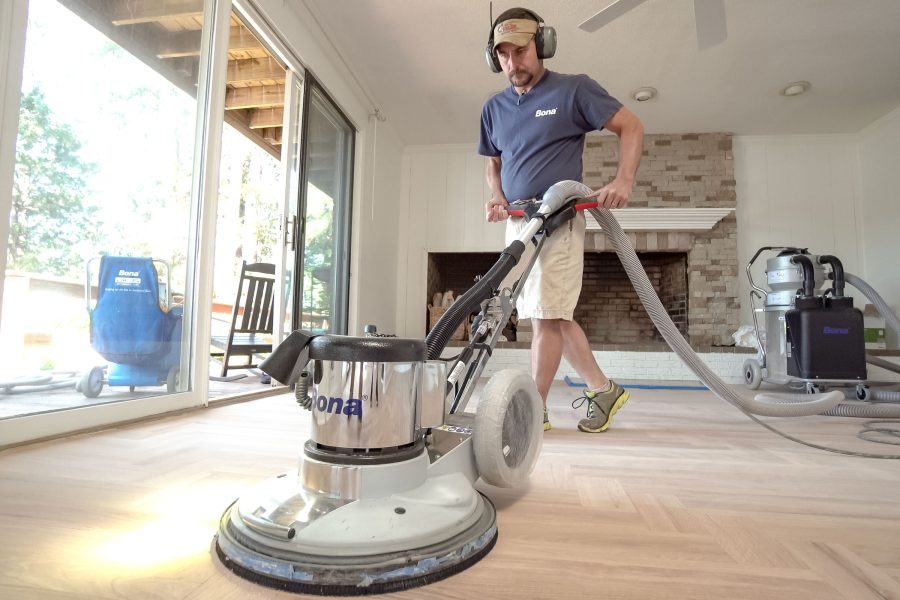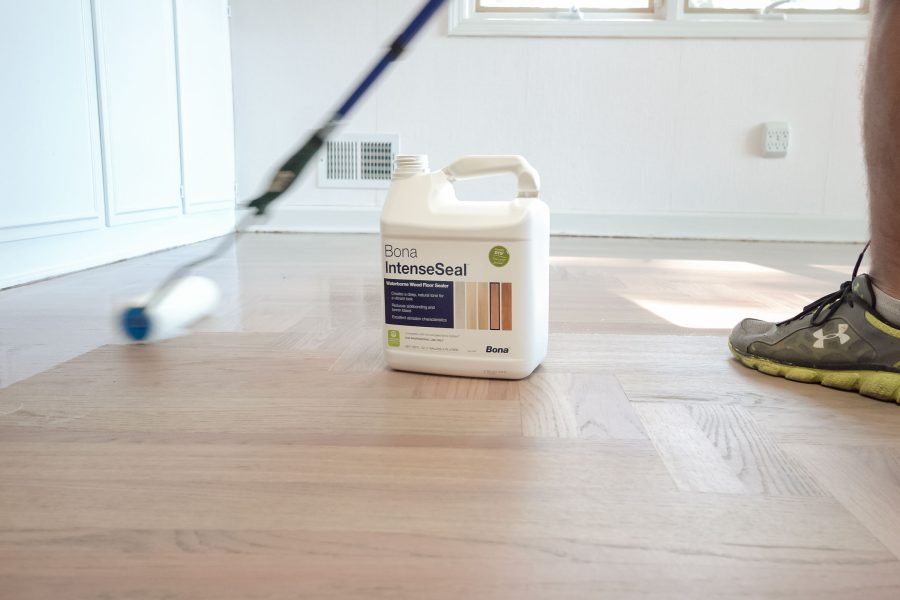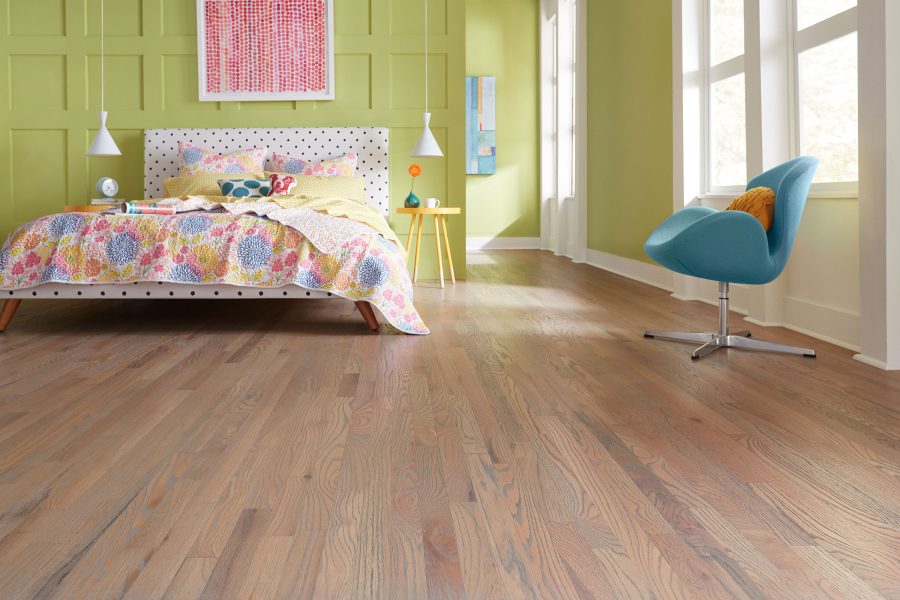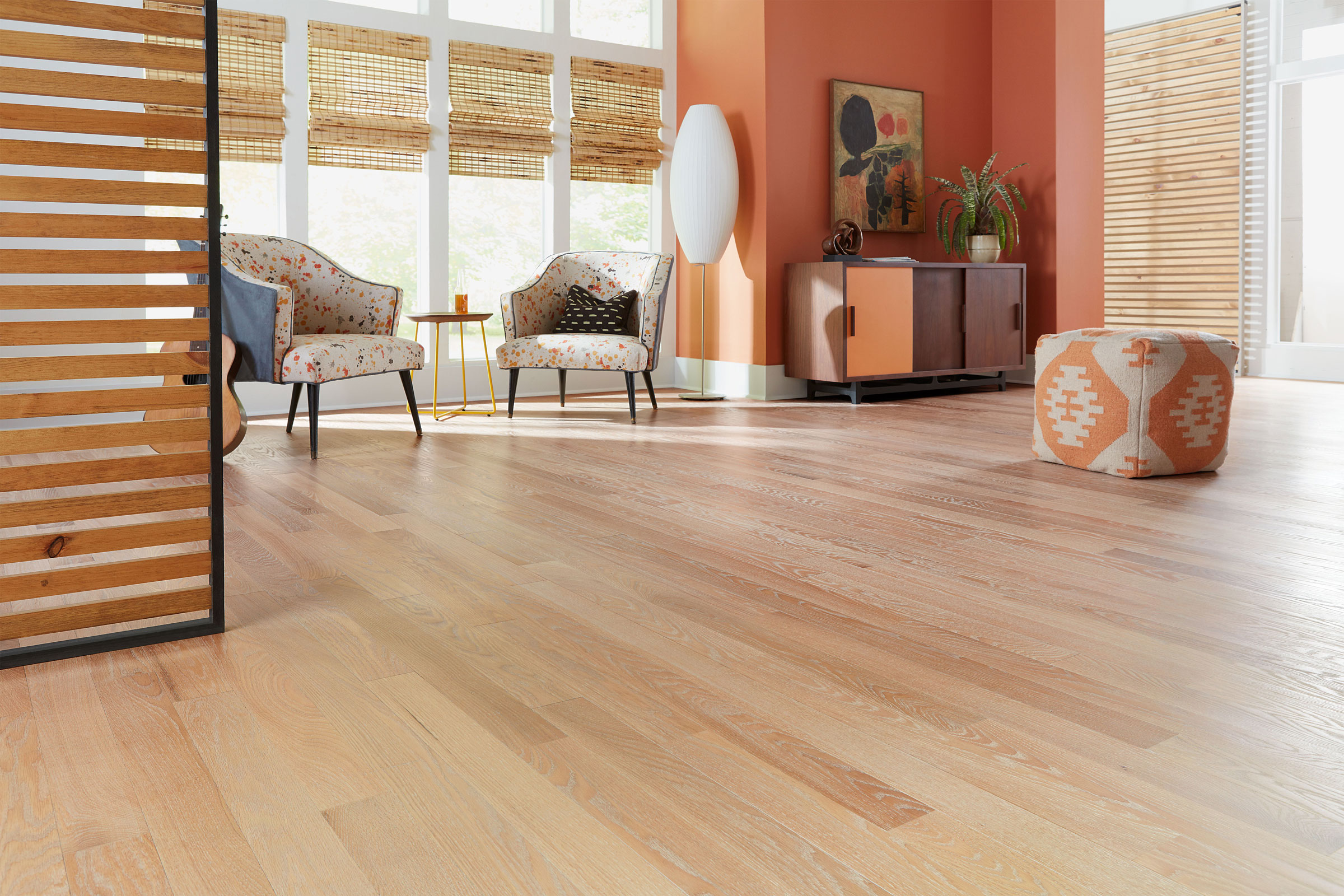Story at a glance:
- Flooring renewal extends the lifespan of existing materials, reduces waste, and conserves resources without sacrificing design possibilities.
- Bona participated in a third-party study that found renewing floors realizes a 90% savings in resources and up to 92% reduction in carbon footprint.
- Renewing resilient flooring saves time and labor to minimize disruption while improving the visual appeal and hygiene in a space.
We all have that scratched edge of the step we notice every time we go into the office, the chipping finish that rattles your cart’s wheels in the grocery store entryway, the creaky floorboard at home that drives us crazy. When the flaws build up—or perhaps when dirt, moisture, and bacteria build up within them—it’s time to consider a solution. Replacement is always an option: rip out the flooring, buy new materials, and hire professionals to install and finish it. This allows for full design freedom and the integration of the most high-performance products.
But the more sustainable option is likely flooring renewal. Renewal extends the lifespan of existing materials, reduces waste, and conserves resources—including and perhaps especially time and labor—without sacrificing design possibilities or the character of the project.
“Often the knee-jerk reaction is that it will be easier and less labor-intensive to replace a floor, because we don’t want to mess with sanding equipment and dust. But actually renewal is much more cost-efficient,” says Matt Casey, director of professional marketing at Bona. Based in Sweden, the flooring solutions company has developed a series of solutions for both hardwood and resilient flooring geared toward the long-term sustainability of projects. Renewal solutions extend floors’ lives with conscientious cleaning and maintenance, low-VOC finishes, and a day-one commitment to sustainability.
Sustainability in Flooring

Photo courtesy of Bona
Sustainability in flooring begins at the moment of a project’s conception but doesn’t end on move-in day. “When an architect or designer comes to a project with sustainability first in mind it shapes the project throughout its life cycle,” Casey says.
For the contractors who install, sand, and finish the floor, sustainability is about safety for themselves and their employees as they work. Solutions include Bona’s dust containment system, which removes the carcinogen from the air for a safer work environment.
Beyond installation we must consider the longevity and impact of the material in the space: Are the flooring products safe, healthy, and appealing to occupants for years to come? Waterborne, low-VOC finishes and sealers are a massive part of this. In its 105-year commitment to sustainability in flooring, Bona introduced the industry’s first waterborne finish and slowly witnessed a preference shift toward these safer, durable products.
Years later when the floor is showing wear and feels outdated, the day-one commitment to sustainability remains intact. It’s time to weigh the benefits of flooring renewal against replacement.
Why Choose Flooring Renewal?

Photo courtesy of Bona
1. Responsible resource management
When replacing a floor the majority of the discarded non-biodegradable flooring material ends up in the landfill. Needless to say, the production and shipping of new flooring materials requires an upfront payment of raw materials and resources.
“The last thing we want to see is all types of flooring materials ending up in the landfill. We create systems and products that can extend the life of floors,” Casey says. Bona participated in a study with the IVL Swedish Environmental Research Institute that found renewing hardwood or resilient floors realized a minimum of 90% savings in resources including transport, electricity use, consumables, and materials.
2. Energy savings
By renovating a floor rather than installing a new one, energy savings may be as high as 95%. Comparing the square meters of flooring in Bona’s yearly production of finishes against the energy use required to install new floors in the same area, the study found energy use would have been 1.8 billion kWh more—comparable to the annual energy consumption of 9,000 Swedish households.
3. Reduced carbon footprint
The IVL study revealed a 78% carbon footprint reduction in wood flooring renewal over replacement. It also showed resilient flooring renewal offering a carbon footprint reduction of up to 92% versus replacement. Compared to the square meters covered in Bona’s yearly production of floor finishes, the carbon footprint of the same area in new floors is larger by 108,000 tonnes of CO2, equal to emissions from 9,600 flights.
4. Time and labor efficiency
“One of the more positive features of the resilient solution is it’s a pretty quick process. A lot of the case studies show it takes less than a day’s work to renew a floor for years to come,” Casey says. Bona’s Resilient Solution can result in a 60% time savings to minimize disruption in a space. In the same area resilient floors can be restored in 18 hours compared to a new installation’s 72 hours.
5. Cost efficiency
A considerable budget is required to cover all of the costs above—materials, energy, and labor especially. With renewal every one of these factors is reduced. The IVL study found that all in all, the cost savings of renovation opposed to replacement is 41%.

Photo courtesy of Bona
6. Design Freedom and Endless Possibility
Working with an existing material should not feel restrictive. Changes to color, texture, sheen, and protection level are all possible in addition to classic restoration.
The possibilities are endless, too. You can rest easy knowing you can renovate your floor—rather than beginning all over.

